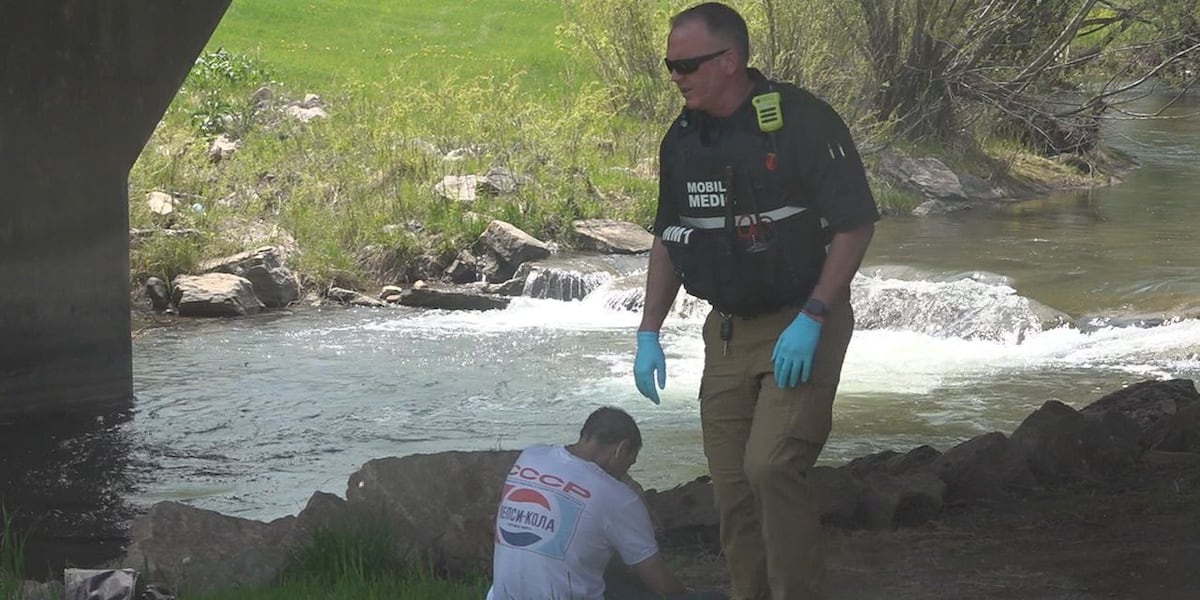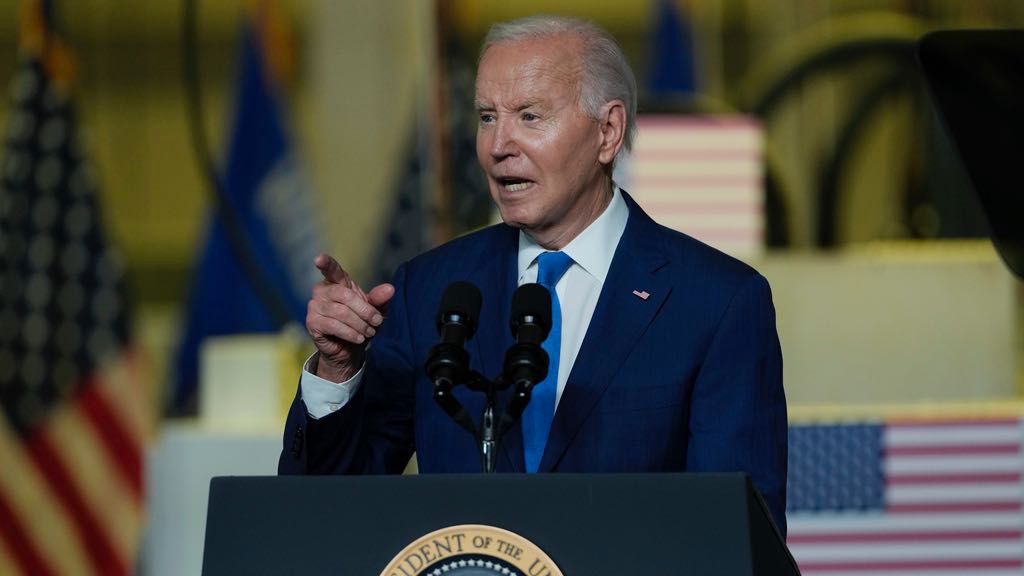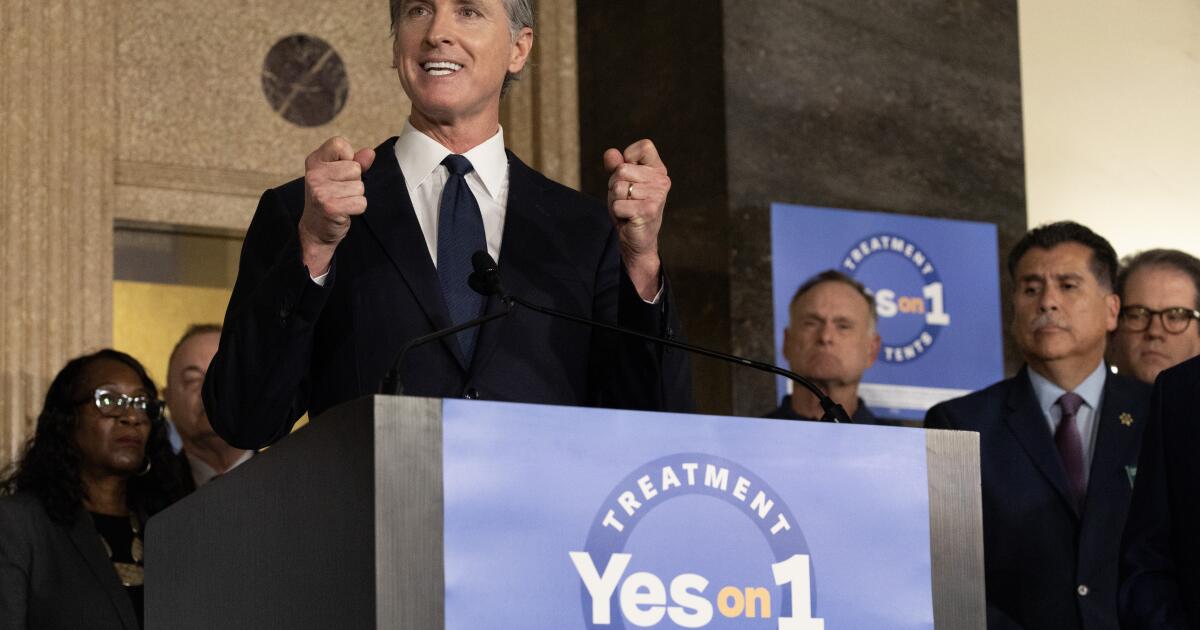South Dakota
Nursing home complaints in South Dakota up 38% since last year

Complaints against South Dakota nursing homes are the highest they’ve been in at least eight years.
The state Department of Health oversees 97 long-term care facilities, according to its website. It fielded 54 complaints as of Dec. 19 – a 38% increase over 2022 and three times higher than 2021 and 2020, when the state received 18 complaints each year.
Both 2021 and 2020 saw COVID lockdowns at long-term care facilities across the state and nation, keeping family members from facilities and residents.
Most complaints in 2023 concern quality of life and care, neglect and abuse, and nursing services. In just over two-thirds of the cases, inspections found no violations.
Of the complaints deemed credible, many involved a lack of adequate care and documentation for residents after a fall or change in health condition.
Federal and state law require long-term care facilities create a “plan of correction” if inspectors find a deficiency.
One facility, Avantara Redfield, had a broken bathtub for months and wasn’t washing residents often enough, leaving some without a shower for two or three weeks. The nursing home fixed the bathtub within a month of the complaint investigation, educated its staff about hygiene and conducted an audit of bathing schedules.
A resident who contracted pneumonia and fell ill at another facility, Avantara Norton, saw a doctor, but staff didn’t notify his family of his condition until after his death.
Nearly a third of all complaints in 2023 were lodged against Avantara facilities. Avantara operates 17 of the state’s 97 nursing homes. Good Samaritan operates the second-most facilities in South Dakota, with 16 nursing homes (13% of 2023 complaints), and Avera operates 10 (4% of 2023 complaints).
The number of complaints in 2023 is higher than the pre-pandemic average. Complaints between 2015 and 2019 averaged 32 per year, with a high of 49 in 2017.
The nursing home worker shortage in South Dakota and across the country has been well documented, with many facilities relying on traveling nurses to fill roles.
Seven nursing homes announced they were closing in 2022, often citing costs, low Medicaid reimbursement rates and workforce shortages as reasons. In 2023, only one announced a closure so far, although three closed in 2023 after previously announcing their intentions to close.
Bennett County Nursing Home closed in October. The Martin-based facility lost over $1.3 million in the first half of 2023, CEO and Bennett County Hospital Administrator Michael Christensen wrote in an open letter to The Lakota Times.
The nursing home had a staff turnover rate of 94.4%. The average state nursing home staff turnover rate in South Dakota is 52.9%. The nursing home relied heavily on costly travel nurses, with only a few local nurses working at the facility. The letter also said nursing homes like Bennett County have seen expenses rise 1,064% since the beginning of the pandemic.
The Legislature approved an increase to a 100% Medicaid cost reimbursement rate this year for community support providers that rely on government funding, such as nursing homes. That’s led to a 25% increase in nursing home funding, according to state officials.
The Legislature also formed an interim committee to study long term care in the state and recommend legislation to address the issue this coming January. Recommendations that would affect nursing homes include establishing a one-time $5 million technology grant program, creating a reimbursement program to incentivize nursing home mergers and creating a waiver to let long-term care facilities double ast adult day cares.
Gov. Kristi Noem proposed a 4% increase in state funding to health care providers next year in her budget address earlier this month.

South Dakota
Noem hires former Oglala Sioux police chief for state post as another tribe votes to ban her • South Dakota Searchlight

Gov. Kristi Noem appointed a former Oglala Sioux Tribe Department of Public Safety chief to a post in the state’s Department of Tribal Relations on Tuesday, alleging he “found himself without a job” for speaking up about drug cartels on the Pine Ridge Reservation.
The appointment of Algin Young as tribal law enforcement liaison came as another tribe voted to ban the governor from its lands, and as questions arose about the impact of a ban voted on by another South Dakota tribe.
Sixth tribal nation bans Noem for comments on cartels, Native children
The Crow Creek Sioux Tribe voted to ban Noem from its lands Tuesday morning, Chairman Peter Lengkeek told South Dakota Public Broadcasting. The Yankton Sioux Tribe’s Business and Claims Committee, the highest-level elected body for that nation, voted to support a ban last week, though it’s since been pointed out that such a ban would not be final and enforceable without a vote of tribal members. The tribes were the sixth and seventh of the nine tribes in the state to vote in favor of banning the governor so far this year.
The recent spate of conflicts with the state’s tribes began on Jan. 31, when the governor delivered a speech on U.S. border policy to a joint session of the South Dakota Legislature. In it, she described the southern border of the U.S. as a “warzone,” language she repeated in her Tuesday press release on Young’s appointment.
Her speech included language calling out the impact of Mexican drug cartels on the reservations.
Noem has suggested that responses from tribal leaders to her cartel comments, as well as the bans, have come because some of them are “personally benefiting” from a cartel presence on reservations.
She’s also drawn fire for telling audiences in Winner and Mitchell that Native children lack hope, and that “they don’t have parents who show up and help them.”
Young appointment implies firing
Noem has argued that the federal government is failing tribes through a lack of law enforcement funding. The Oglala Sioux Tribe has sued the federal government over that issue, and Noem pledged to support that lawsuit during her Jan. 31 speech.
The governor’s office has not intervened as a party in the tribe’s most recent federal lawsuit, but she has moved to support tribal law enforcement in other ways. Last month, she pledged to fund a special session of the state’s police academy specifically for tribal trainees. Most tribal police train for 13 weeks in New Mexico, and South Dakota’s congressional delegation has lobbied for a regional training facility to encourage recruitment.
In February, Noem penned a letter to the U.S. Senate Committee on Indian Affairs urging more funding for tribal law enforcement in South Dakota.
In Noem’s press release on his appointment, Young said that he looks forward “to serving as an ambassador for the State of South Dakota at the federal level and with the State’s nine tribal nations to facilitate solutions for tribal law enforcement and understand and navigate jurisdictional challenges.”
The release also includes a thinly veiled reference to tribal resistance to Noem’s comments.
The release says that Young “found himself without a job” after “bravely testifying before the U.S. Senate Committee on Indian Affairs on the cartel presence on tribal lands.”
Noem slings accusations about tribes while signing education bills
Young testified before that committee during a listening session about public safety in Indian Country on March 20. His testimony came minutes after the testimony of Oglala Sioux Tribal President Frank Star Comes Out.
Neither mentioned cartels in their verbal comments, which can be viewed in full on the committee’s website.
The Senate committee did collect written testimony until April 12, and that testimony is not available online. There was no immediate response Tuesday to an email to the committee’s press officers asking for any written testimony that may have been submitted by Young or Star Comes Out.
The tribe’s director of public safety job was advertised on the tribe’s Facebook page on April 15. There were no Senate Indian Affairs Committee hearings between March 20 and that date.
Indian Country Today reported that Young’s contract expired on April 20.
Star Comes Out did not return a Searchlight message seeking comment on Young’s appointment.
Representatives with Noem’s office and the Office of Tribal Relations did not offer a date for the “cartel presence” testimony.
Yankton Sioux Tribe ban vote not binding
So far, seven tribes have voted to ban Noem from their lands. The Lower Brule Sioux Tribe and Flandreau Santee Sioux Tribe have yet to pass such a resolution. Lower Brule voted down such a ban earlier this year, but Chairman Clyde Estes told SDPB that it might consider one again in June based on Noem’s comments about Native children.
Noem to lawmakers: Be ready to take action on southern border ‘invasion’
“The children should be left out of any political discussion,” Estes told SDPB’s Lee Strubinger. “To say that they have no hope is wrong and she should not have said that.”
The Yankton Sioux Tribe’s Business and Claims Committee voted to support a ban that would bar the governor from its lands on Friday, but that vote lacks the authority of law, the committee’s secretary said Tuesday.
Such a ban would not be official without a vote from the tribe’s general council, meaning a vote of tribal members at a meeting called by either the committee leadership or a petition from tribal members.
“We don’t have anything scheduled,” said Secretary Courtney Sully. “We don’t even have a resolution.”
The Yankton Sioux Tribe is the only one of the nine tribes in South Dakota that lacks a tribal council-style government with elected representatives to vote on all tribal affairs. Such governments are known as “IRA” governments, named for the Indian Reorganization Act of 1934, which encouraged tribal nations to adopt city council-style authority structures.
The Yankton Sioux Tribe’s Business and Claims Committee, Sully said, aligns more closely with pre-colonial decision-making. The committee is empowered to manage the tribe’s day-to-day affairs, Sully said, but cannot take larger actions without a vote of the people.
“Banning someone isn’t part of our daily business,” said Sully, who said she abstained from the Friday vote. She doesn’t like the governor’s comments, she said, but doesn’t believe they rise to the level of something requiring a ban.
The majority of the committee did vote to endorse a ban, however. A statement from Vice Chair Jason Cooke, sent to Searchlight on Tuesday, reiterated the earlier words of committee member Ryan Cournoyer, who said the vote was a sign of solidarity with other tribes.
The statement calls the governor “anti-tribe.” It references pre-2024 conflicts over pipeline protests, COVID checkpoints, education, and Noem’s lack of response to discrimination against Native Americans by a Rapid City hotel owner. The statement says the governor “now blames tribes for crime in her own cities.”
“Governor Noem, stop the political pandering and get serious about working on these issues with Tribes,” Cooke wrote. “It has been six years of inaction, ineptness, and ignorance from your office on serious policy issues impacting our shared citizens.”
GET THE MORNING HEADLINES DELIVERED TO YOUR INBOX
South Dakota
New list rates the most bipartisan members of Congress—and the least • South Dakota Searchlight

WASHINGTON — Maine Republican Sen. Susan Collins and Pennsylvania Republican Rep. Brian Fitzpatrick were the most bipartisan members of Congress last year, according to a newly released analysis from the Lugar Center and the McCourt School of Public Policy at Georgetown University.
The least bipartisan House lawmaker was Ohio Republican Jim Jordan, while Alabama’s Katie Britt, a Republican freshman, placed last among senators.
No member of South Dakota’s all-Republican, three-member congressional delegation ranked in the top 10 of either chamber, but all three were in the top half of the rankings. Sen. Mike Rounds ranked 20th in the 100-member Senate, and Sen. John Thune ranked 42nd. Rep. Dusty Johnson ranked 106th in the 435-member House.
The latest ranking of the most bipartisan lawmakers comes amid one of the least productive Congresses in the nation’s history and just months before nearly all House lawmakers and about one-third of the Senate face voters at the polls in November.
Maria Cancian, dean of the McCourt School of Public Policy, wrote in a statement announcing the new rankings that “while there is much room for improvement, I am encouraged to see some progress on cross-party collaboration.”
“In these deeply divided times, and with an increasing amount of misleading information online, we need tools like the Bipartisan Index more than ever — an evidence-based and nonpartisan approach for measuring how well policymakers work across the aisle to get things done,” Cancian wrote.
Lugar Center Policy Director Dan Diller wrote that it was “especially disheartening that all eight new Senators who took office in January 2023 ranked in the bottom 30 percent of Senate scores.”
“Bipartisan cooperation on legislation in 2023 was deficient by historical standards, though there were some marginal improvements in scores from the previous Congress,” Diller wrote.
The website with the rankings states that the “Bipartisan Index is intended to fill a hole in the information available to the public about the performance of Members of Congress.”
The Lugar Center, founded by the late U.S. Sen. Richard Lugar, a Republican from Indiana, “is a platform for informed debate and analysis of global issues, including nonproliferation of weapons of mass destruction, global food security, foreign assistance effectiveness and global development, energy security, and enhancing bipartisan governance,” according to its website.
The rankings take into consideration “the frequency with which a member of Congress sponsors bills that are co-sponsored by at least one member of the opposing party” and “the frequency with which a member co-sponsors bills introduced by members of the opposite Party.”
Who is the most bipartisan?
The top 10 senators were:
- Collins
- Michigan Democrat Gary Peters
- New Hampshire Democrat Maggie Hassan
- West Virginia Democrat Joe Manchin
- Texas Republican John Cornyn
- Nevada Democrat Jacky Rosen
- Alaska Republican Lisa Murkowski
- Kansas Republican Jerry Moran
- Indiana Republican Todd Young
- Montana Democrat Jon Tester
The top 10 House lawmakers were:
- Fitzpatrick
- New York Republican Marcus Molinaro
- New Hampshire Democrat Chris Pappas
- New York Republican Mike Lawler
- North Carolina Democrat Don Davis
- Puerto Rico Republican Delegate Jenniffer González-Colón
- Nevada Democrat Susie Lee
- Nebraska Republican Don Bacon
- New Jersey Democrat Josh Gottheimer
- Iowa Republican Zach Nunn
The Lugar Center and the McCourt School of Public Policy at Georgetown University wrote on their website that their “aim in publishing this Index is not to promote a specific legislative agenda, as is the case for many indexes, but solely the promotion of a bipartisan approach to governance.”
“The credibility of the Index is derived from the objectivity of its methodology; Index scores are computed formulaically from publically available data,” it states. “The Index requires no subjective assessment of specific legislative items.”
The least bipartisan House lawmakers following Jordan were New York Democrat Alexandria Ocasio-Cortez, Missouri Democrat Cori Bush, New York Democrat Jamaal Bowman and Missouri Republican Eric Burlison.
House Speaker Mike Johnson, a Louisiana Republican, ranked 423, but will likely be excluded from future scores since he has now occupied one of the top two leadership posts for at least six months.
The least bipartisan senators following Britt were Missouri Republican Eric Schmitt, Washington state Democrat Patty Murray, Wisconsin Republican Ron Johnson and Arkansas Republican Tom Cotton.
GET THE MORNING HEADLINES DELIVERED TO YOUR INBOX
South Dakota
Rapid City’s mobile medic the only of its kind in South Dakota

RAPID CITY, S.D. (KOTA) – Last year EMS in Rapid City responded to more than thirteen thousand calls, but what about times when someone didn’t need a full ambulance? That’s where mobile medic comes into play.
The program was created in 2013 but didn’t have its first active mobile unit until 2016.
“To have senior individuals who knew the streets. Who were out and could insert themselves out in the community versus taking a fire engine and an ambulance out of a fire station. Leaving those resources available for higher acuity emergencies,” said Ryan Marcks, captain of the Rapid City Fire Department’s mobile medic program.
The unit consists of a group of senior paramedics who go around town, focusing on underserved communities, and providing medical services to anyone in need to prevent 9-1-1 calls.
Marcks says it is a unique program.
“We’re the only program of its sort within the state of South Dakota. The next closest program is in Denver which is different than ours. Everyone focuses on the needs of the community,” said Marcks.
Marcks added the program is also cost-effective.
“It’s a cost savings for the taxpayers. Instead of sending an ambulance and a fire engine to an unknown problem, we can send a highly trained paramedic with the same equipment to that situation and get there before anyone else,” said Marcks.
Marcks says he and his team, during a regular shift, will encounter everything from someone being intoxicated to life-and-death situations where someone isn’t breathing. He added the job is rewarding.
“Knowing that, after I have left this planet, something I’ve done has made a lasting difference. That’s, it’s a good feeling. We work very closely with the Police department and all city entities. We all work very very well together towards a common goal,” said Marcks.
See a spelling or grammatical error in our story? Please click here to report it.
Do you have a photo or video of a breaking news story? Send it to us here with a brief description.
Copyright 2024 KOTA. All rights reserved.
-

 Politics1 week ago
Politics1 week agoHouse Dems seeking re-election seemingly reverse course, call on Biden to 'bring order to the southern border'
-

 Politics1 week ago
Politics1 week agoFetterman says anti-Israel campus protests ‘working against peace' in Middle East, not putting hostages first
-

 World1 week ago
World1 week agoGerman socialist candidate attacked before EU elections
-

 News1 week ago
News1 week agoUS man diagnosed with brain damage after allegedly being pushed into lake
-

 World1 week ago
World1 week agoGaza ceasefire talks at crucial stage as Hamas delegation leaves Cairo
-

 Politics1 week ago
Politics1 week agoRepublicans believe college campus chaos works in their favor
-

 World1 week ago
World1 week agoStand-in Jose Raul Mulino wins Panama presidential race
-

 World1 week ago
World1 week agoTech compliance reports, Newsletter



















